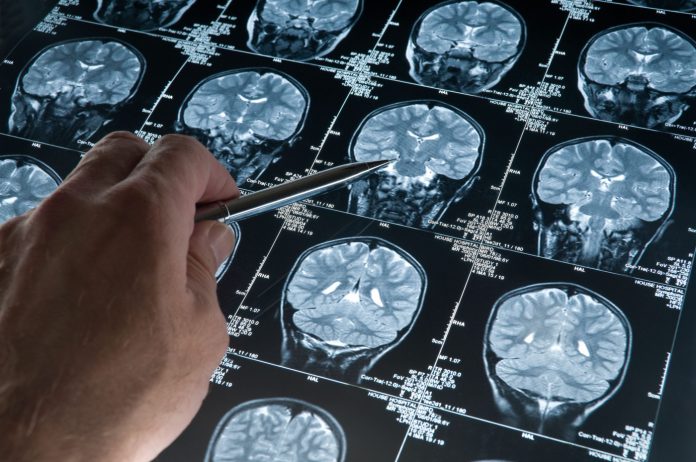
Patients with Parkinson’s disease showed significant improvement in their tremors, mobility, and other physical symptoms after having a minimally invasive, focused, ultrasound, according to a study published today in the New England Journal of Medicine.
“These results are very promising and offer Parkinson’s disease patients a new form of therapy to manage their symptoms. There is no incision involved, which means no risk of a serious infection or brain bleeding,” said study corresponding author Howard Eisenberg, MD, Professor of Neurosurgery at University of Maryland School of Medicine (UMSOM) and neurosurgeon at University of Maryland Medical Center (UMMC).
About one million Americans have Parkinson’s disease, a neurodegenerative disorder that affects brain cells or neurons in a specific area of the brain that produce dopamine. Other treatments for Parkinson’s include medications and deep brain stimulation (DBS) from surgically implanted electrodes. Because of the low response rate and potential side effects, there is great interest in new treatments for this condition.
This device, called Exablate Neuro, was approved over a year ago by the U.S. Food and Drug Administration (FDA) to treat advanced Parkinson’s disease on one side of the brain. The FDA approval was based on findings from the UMSOM clinical trial published today.
The clinical trial was led by researchers at UMSOM and involved 94 Parkinson’s disease patients who were randomly assigned to undergo focused ultrasound to ablate a targeted region on one side of the brain or to have a sham procedure.
After three months of follow-up, nearly 70 percent of patients in the treatment group were considered successful responders to treatment, compared to 32 percent in the control group, who had received an inactive procedure without focused ultrasound. Patients enrolled in the trial had moderate Parkinson’s and were not responding well to medications. They were treated with one session of focused ultrasound on the side of their brain that controlled the side of their body where symptoms were more severe.
Two-thirds of those who responded initially to the focused ultrasound treatment continued to have a successful response from the treatment a year later.
“Our study will help doctors and patients make an informed decision when considering this new treatment modality to help better manage symptoms,” said study co-author Paul Fishman, MD, PhD, Professor of Neurology at UMSOM and a neurologist at UMMC. “But it’s important for patients to realize that none of the treatments currently available will cure Parkinson’s disease.”
“Focused ultrasound is only approved by the FDA to treat one side of the brain in Parkinson’s disease patients, so it may be more appropriate at this time for patients with symptoms predominantly on one side,” said study co-author Vibhor Krishna, MD, a professor of neurosurgery at the University of North Carolina, Chapel Hill.
Eisenberg and his colleagues are currently conducting a clinical trial to test the Exablate Neuro device on both sides of the brain.













